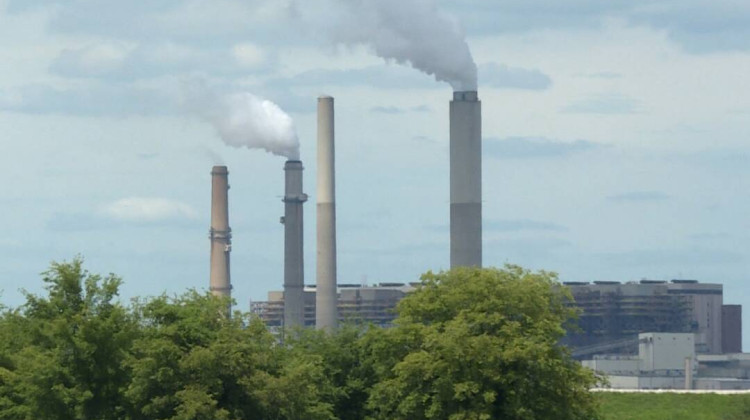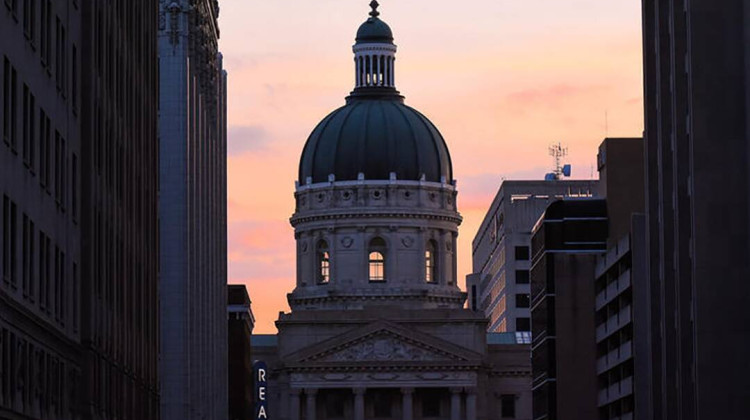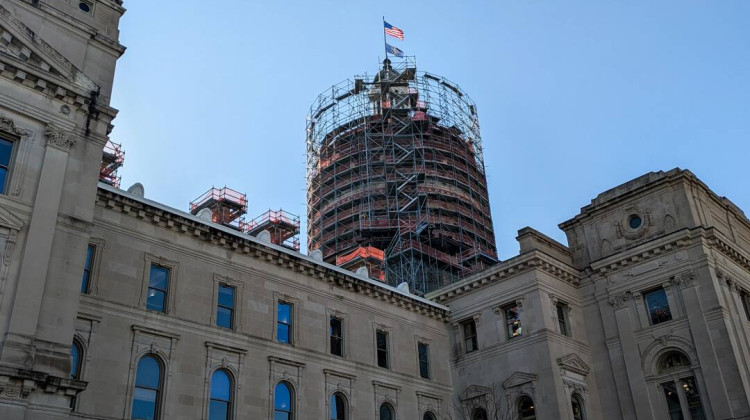
A map of INDOT's proposed sites for electric vehicle charging stations, disadvantaged communities (DAC) and rural areas in Indiana.
Indiana Department of TransportationIndiana will use more than $100 million from the federal infrastructure law to install electric vehicle charging stations in the state.
Scott Manning is deputy chief of staff for the Indiana Department of Transportation. He said the purpose of the National Electric Vehicle Infrastructure (NEVI) program is to lessen the fear of running out of power on the road — something that can keep people from adopting electric vehicles.
“It is even more focused on that longer distance travel, travel across the state or regional travel, if you will. So the investment is very much focused on high volume, high traffic corridors," Manning said.
INDOT plans to make it so most of Indiana's population would be no more than 35 miles from a station and all Hoosiers — including rural residents — would be no more than 50 miles from a station.
Nearly 60 percent of the chargers would be located in disadvantaged or rural communities. But “disadvantaged” can mean many things — it doesn’t have to mean racial or ethnic diversity.
That concerns the Indiana Alliance for Equity, Diversity and Inclusion for Electric Vehicle Infrastructure and Economic Opportunities. It's a new alliance made up of groups like Black-owned businesses, faith institutions, non-profits and civil rights groups like the Indiana NAACP.
Denise Abdul-Rahman is part of the alliance and is the environmental climate justice chair for the Indiana NAACP.
She said failing to locate EV chargers in Black and Brown communities would create two Indianas — one where people have EVs and better air quality and another where children are still riding on diesel buses and there’s no place to charge up.
“I think Indiana is better than that and we need to make sure that we get it right," Abdul-Rahman said.
Join the conversation and sign up for the Indiana Two-Way. Text "Indiana" to 73224. Your comments and questions in response to our weekly text help us find the answers you need on statewide issues, including this series on climate change and solutions.
A state law passed this year required utilities that install EV chargers as part of a state pilot program to place chargers in areas where "racially or ethnically diverse" communities had access to them.
Among other things, Abdul-Rahman said the alliance would like to see EV chargers generate revenue for Black-owned businesses and provide jobs for African-American Hoosiers and persons of color.
Manning said about 20 of proposed EV charging sites are in areas where minority populations are either at or exceed the national average. He said, depending on funding, there could be 44 to 75 sites in the state overall.
INDOT has identified general areas where the charging stations could be placed, but hasn’t picked specific locations yet.
Manning said INDOT relied on maps from the U.S. Department of Energy, the U.S. Department of Transportation and the U.S. Environmental Protection Agency’s environmental justice screening tool to identify disadvantaged communities.
“We've also, I think, really tried to leverage our public involvement efforts to create a dialogue and have communities let us know that they're interested in being part of the program — and particularly disadvantaged communities, reaching out to us, engaging us, letting us know what their priorities are,” he said.
But Abdul-Rahman said INDOT only held three in-person public meetings and it’s unclear what percentage of the respondents in a survey for the project were ethnically diverse people or businesses. The alliance has also called for someone committed to equity to be on INDOT’s working group.
“If you don't have someone with the commitment to equity from the very beginning, then we're doomed for the same set of failed systems from the past,” Abdul-Rahman said.
Manning said INDOT has created a map overlay for the proposed sites that shows census tracts with minority populations that are at or above the national average. He said that map should be available for review when the agency publishes its final draft online Wednesday of next week.
The Biden administration requires that at least 40 percent of the benefits from clean energy infrastructure go to “disadvantaged communities.” But the administration never singled out race requirements for fear of legal action.
Contact reporter Rebecca at rthiele@iu.edu or follow her on Twitter at @beckythiele.
 DONATE
DONATE






 Support WFYI. We can't do it without you.
Support WFYI. We can't do it without you.